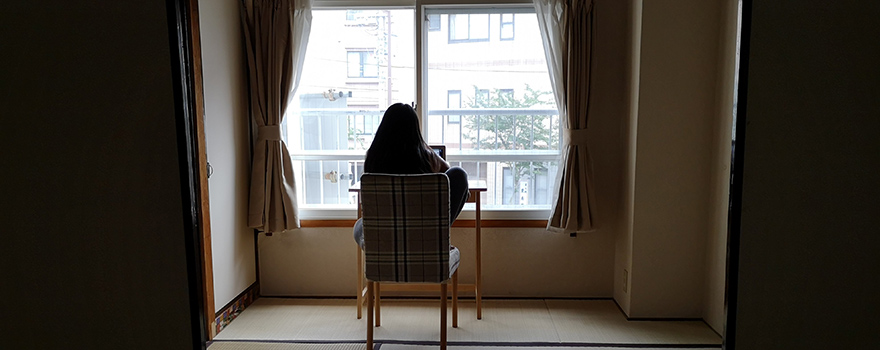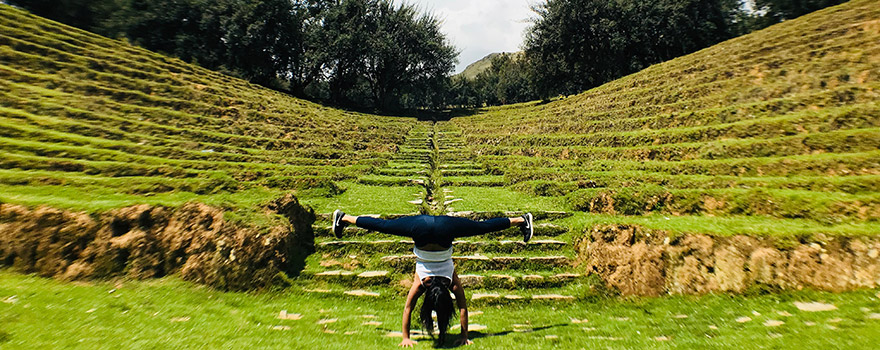“…not till we are completely lost, or turned round – for a man needs only to be turned round once with his eyes shut in this world to be lost – do we appreciate the vastness and strangeness of nature. Every man has to learn the points of compass again as often as be awakes, whether from sleep or any abstraction. Not till we are lost, in other words not till we have lost the world, do we begin to find ourselves, and realize where we are and the infinite extent of our relations.” – Henry David Thoreau, Walden



Tag: andes
This past year has been a journey of connection for me – just as every cell in the body is separate and simultaneously part of a whole, so too are we as human beings individuals that are intimately interconnected. It’s what I come back to when I feel lost, and I believe it’s what underlies healing: the realization that everything we do (eat, breathe, say, etc.) and experience affects the whole, then harnessing this knowledge for growth in any area.
There has always been a certain magic about the Andes – it’s a world where the Incans achieved the impossible with their architecture, where tourists are moved speechless by the energy of Machu Picchu, where tradition, dreams, and rituals are revered, where sacred shamans and commoners alike communicate with spirits, and where people from all over the world come to be transformed by ancient healing drugs.
“Ahora sé que el tiempo es la única manera que tenemos para comprar nuestros sueños.” — Lucho Quequezana (link in Spanish) [I now know that time is the only means we have to buy our dreams.]
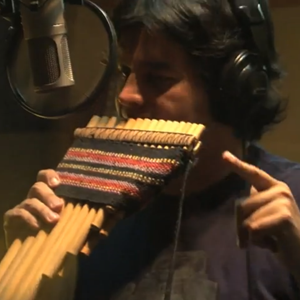
Lucho’s parents forced him to bury his dream of becoming a musician, so he filled his life with his studies instead. In Lima, he studied Communications and ended up teaching at one of the best universities in the country, the Pontifical Catholic University of Peru. It was a comfortable life, but his love for creating traditional Peruvian music continued simmering in his heart, seeking a revival.
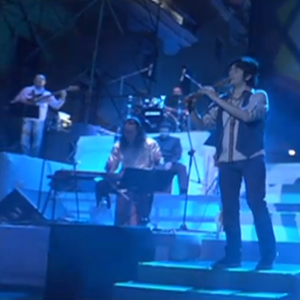
Lucho continues to tour with Sonidos Vivos and teach Peruvian music internationally. He has shared extracts of his compositions with Cirque du Soleil and has also produced a documentary of his group’s story and journey. Meet the multicultural members of the band and get a taste of Peruvian fusion music in this short promo clip of Sonidos Vivos’ world tour last year:
When and how have you valued time over money? How has music played a role in your life?
I had the privilege of spending these past two weeks in San Pedro de Atacama, Chile, assisting at a conference that endeavored to apply research to education. The Latin American School for Education, Cognitive and Neural Sciences brought together not only recognized authorities from around the world, but also an international group of PhD candidates and new professors. They gathered in the small town of San Pedro (population: approximately 5,000) in the middle of the Atacama Desert.
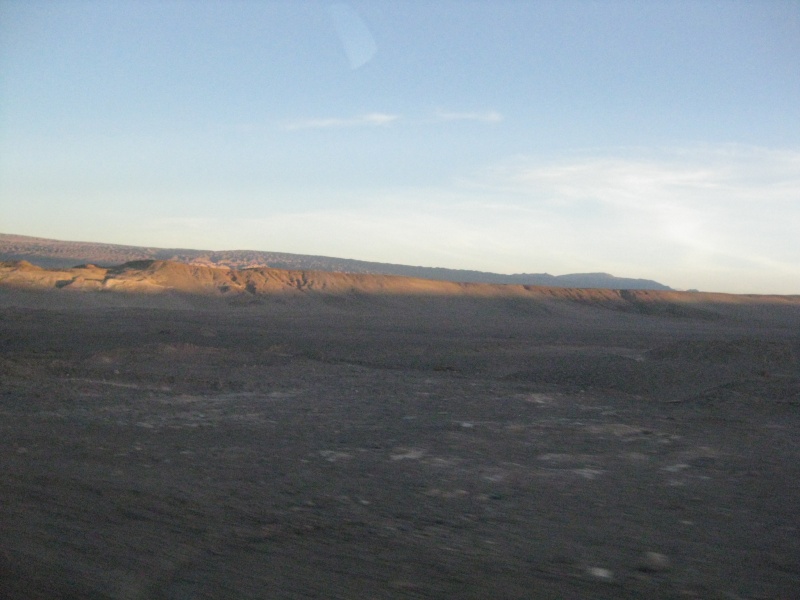
There’s something about being in the middle of nowhere that amplifies similarities and fosters connections. We were all affected by dry skin and an unreliable Internet connection, awed by the expansiveness of the desert and the actual number of potentially visible stars in the night sky (San Pedro is one of the best places in the world to stargaze), and afflicted by the earthquake in Japan. For the purposes of the conference, the aura of fellowship encouraged thoughtful discussion about applying the learning and intellectual sharing to the real world. The atmosphere generated ideas, cultivated future research collaborations and motivated each participant to pass on new knowledge to their respective areas.
It was a beautiful example of how the strength of similarities could overcome differences and the beauty lies in getting past stereotypes to experience a true willingness to learn from and through others. There was less identification with divisive labels, such as Costa Rican versus Uruguayan, student versus faculty and scientist versus educator. Instead, the conversation shifted from a comparison about what each person could or couldn’t do to a sense of teamwork with a focus on how people could work together to achieve more than one could on his or her own. We became humbled learners who recognized the essential humanity that bonds us together as part of the same global community.
Achieving openness can be facilitated by a purpose, such as the aim of the LA School, but I believe that this phenomenon can actually happen anywhere. It just requires that you step outside of your comfort zone, outside of the categories that your mind has already formed. The surprises you’ll find can diminish fears, break barriers and, most importantly, construct a sense of connectedness that has the power to lead to positive changes.
Have you been surprised by similarities you share with another? How have you seen or experienced the power of connectedness?
P.S. I made it back home to Huancayo safely and am slowly settling back into the groove of things. Thanks for your patience!
I promised to blog for a cause for International Women’s Day. In the days leading up to today, I thought of all the strong, inspirational women I knew… and felt fearful and weak in comparison as I started my trip down south from Huancayo to San Pedro de Atacama in Chile. It was going to take over 50 hours to get from one place to the other via three buses, which turned out to be four, that arrived late at each destination. I imagined I would use all those extra hours to think about this blog post, but traveling is exhausting, especially when you’re on the verge of fear.
I was afraid about traveling alone as a woman, meeting the wrong people, turning into one of the tragic tales that grace the front cover of daily newspapers and being a victim of the fallibility of developing countries. I’m neither a traveler nor an adventurer; I prefer to settle in and make myself a cozy nook in another country. I chose to purchase tickets from more reputable bus companies, put a lock on my backpack and sleep with my foot slipped through the backpack strap, but there are no guarantees here.
Thankfully, I made it from one end of the Andes to the other smoothly and in one piece even though I can only catch around 50% of what Chileans (and Spaniards and Cubans) say because they speak so quickly. I wondered why I was worried in the first place and am trying to convince myself that the trip back in two weeks will be easier now that I know what to expect. On the way over the Peru-Chile border in a shady-looking mafia car, one of the men I was traveling with told me I was brave for traveling alone. Maybe I really was brave if a person can be brave and afraid at the same time. Today, I want to recognize all brave female travelers and adventurers who aren’t afraid of taking risks, being alone and living without plans.
Huancayo is surrounded by farmland, so I’ve encountered a myriad of animals ranging from livestock for livelihood to city pets in silly clothes. Some animals have a purpose: cows for fresh milk, donkeys for reliable transport and alpaca for soft wool. There are also animals raised solely for food: chickens and pigs. Other animals are clearly pets: dogs, cats, hamsters and iguanas. I’m still getting used to the fact that guinea pigs are always raised for food, often cooked as a special dish, and never kept as companions.
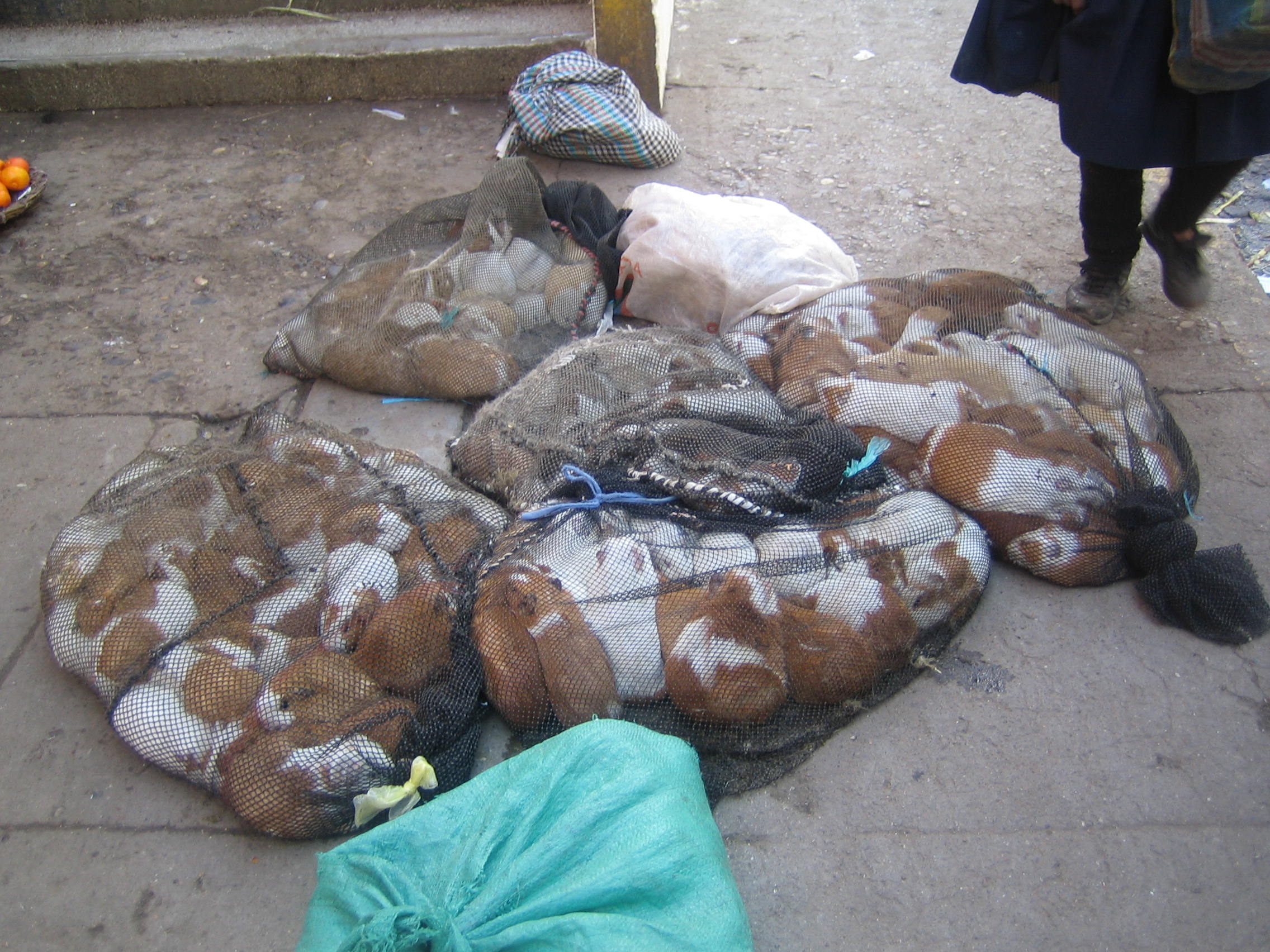
Since neutering is expensive and uncommon, Huancainos are more likely to receive a puppy from a friend or pick up a stray kitty. Some homeowners have come-as-they-go pets who show up during the day to have a snack, hang out for a while and then leave every evening. Stray dogs are rampant here. They often walk right beside you and sleep in the middle of the sidewalk as if they own the city. You’re part of their daily drama when it comes to scavenging, playing, fighting and copulation. In the more rural areas, stray dogs can be vicious, so you always carry a rock around and hopefully, never have to actually throw it.
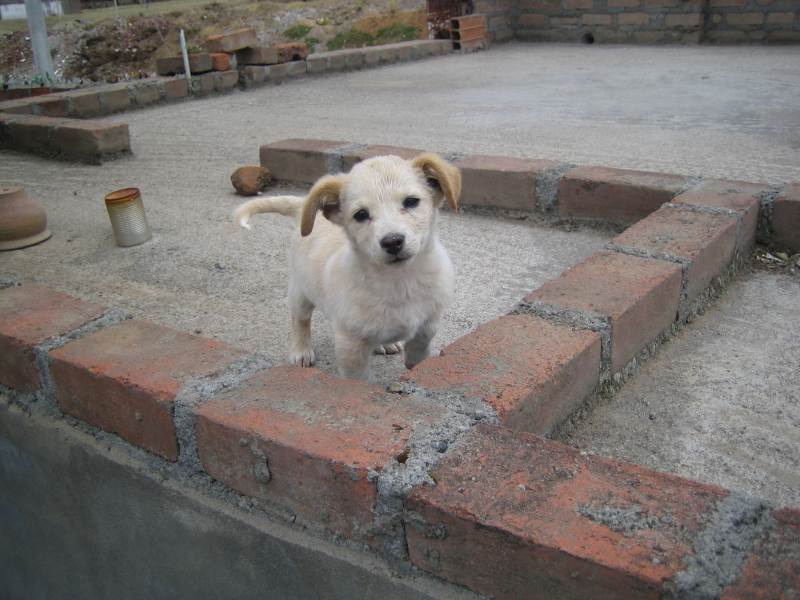
To communicate with Peruvian animals and animal owners alike, the foreigner must learn new vocabulary of onomatopoeic words. Cats are almost always called “Michi,” often in place of an actual pet name. This name apparently derives from the sound they make: “miau” (“meow”). Dogs are usually pinned “Fido” (“fee-doh”) and they say “guau” (“wow”). I still don’t understand how chicks “pio pio,” although it probably makes more sense that I wake up to the rooster on the fourth floor greeting me with “ki ki ri ki” rather than “cock-a-doodle-doo.” The only other animals that seem to express themselves similarly to their North American counterparts are pigs (“oink”), ducks (“cuac”) and cows (“muu”).
We welcomed a kitty to the family last Thursday and were surprised to learn that he speaks both cat and dog languages, miau-ing and guau-ing in his conversations with us. After a day of fear and loathing for getting him vaccinated, Fénix (Spanish for “Phoenix”) is now purring like a motor, playing with all reachable shoelaces and falling into unescapable buckets:
The thunderstorm is furious. Every flash of lightning has me cringing in anticipation of the accompanying roar of thunder. The fear is both in the anticipation of the sound and in the knowledge that something, someone was potentially hit. They say that you can measure the distance of a lightning bolt by counting the seconds between the flash of lightning and the sound of thunder. One could have hit my neighbour.
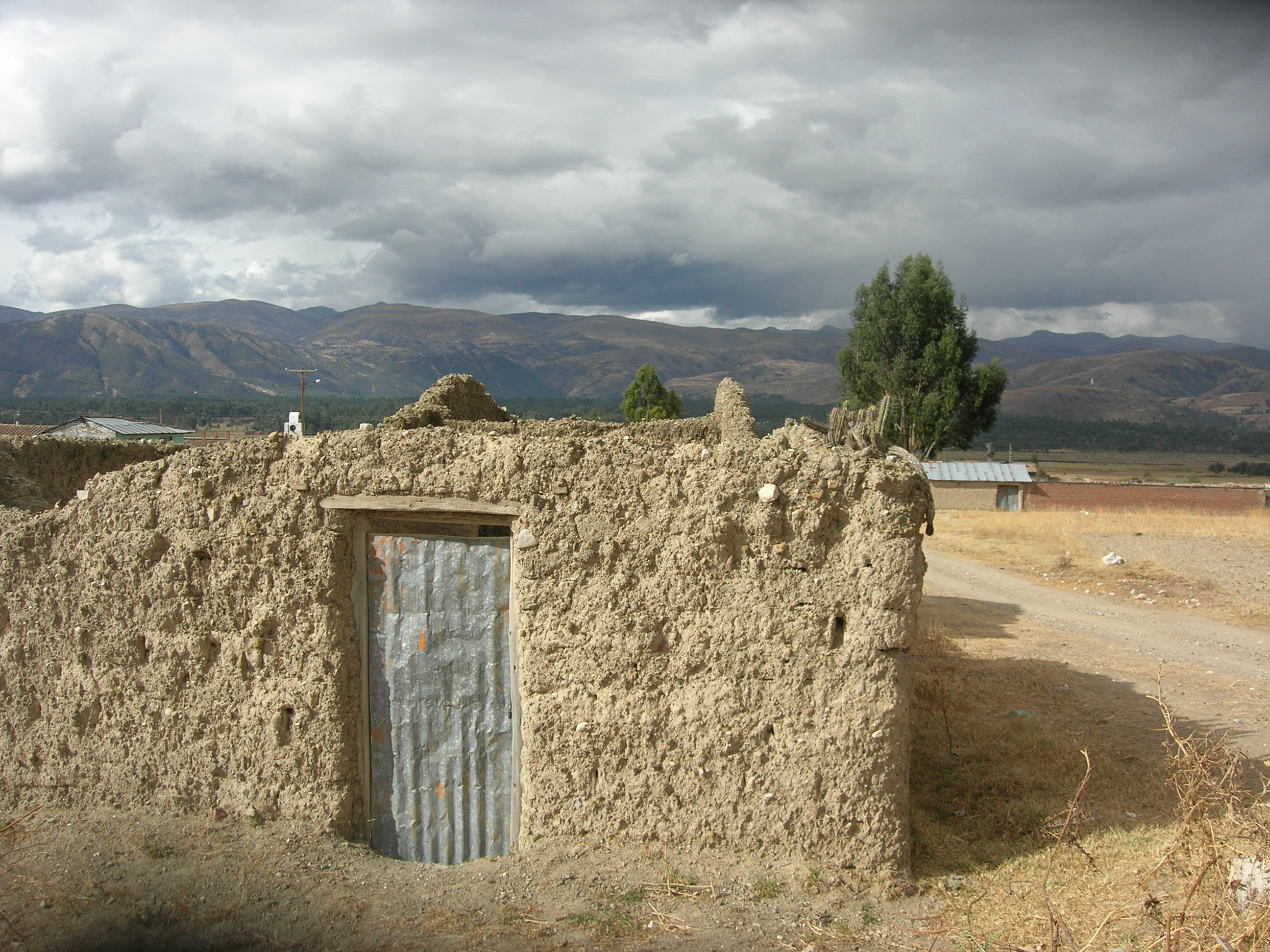
As I’ve learned, any electronic device plugged in to an outlet is susceptible to exploding if a lightning bolt heads your way. It doesn’t help that many buildings are in various states of incompleteness, with long protruding metal bars for the possibility of constructing another floor. The poles reach into the sky, seeking communication with the jagged stretches of light. People are also at risk of being electrocuted by lightning bolts. There are various cases in the Mantaro Valley of electrocuted farmers; they are standing in the middle of their farmland with cell phone in hand.
Intense stormy weather, torrential rains and spurts of hail are typical in the Central Andes. They are also typically unpredictable. It can be deathly sunny all day, and then the clouds roll in within minutes. I’ve gotten into the habit of carrying around a portable umbrella. Most people don’t. I think it has to do with the I’ll-take-it-as-it-comes attitude to life that I admire but have a hard time adopting.
As the claps of thunder die down, I feel cozy in my apartment as I listen to the rhythm of the heavy rain. I don’t mind it so much without the shocking, angry thunder. I wonder and worry about the thousands of people who live in adobe clay residences. They must dread the thundershowers when it means water dripping (or cascading) into their homes, muddy floors and wet collapsable walls. I take a look at the brick walls of my apartment and feel safe, until I notice droplets of water on the ceiling. I guess I didn’t ask for this to be easy.
What makes you feel cozy?
A good friend e-mailed and asked: ” What has been the biggest culture shock that you have experienced so far?” and I had to think about that one…
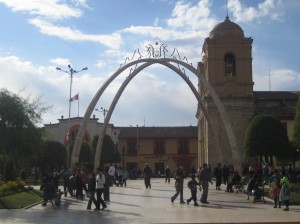
I’m ashamed to say that if I had done more research on Peru and South America, this culture shock would probably have been much less potent. At the same time, because I’m jumping with a near-blank slate, I’ve noticed that my eyes are open a lot wider, my attitude is fresher, and I’ve been able to connect more with so many people who are excited to teach me about their country (the Huancainos are so friendly!)
The Plaza Constitución is only a couple blocks away from the apartment and I love sitting there, in the centre of the city, seeing people come and go, imagining their stories. And I think of how lucky I am to be here and how my own story is unfolding.
Here, in Huancayo, I am La China (pronounced chee-na), the Chinese Girl. There is yet to be a day that I haven’t overheard others talking about me as China or Chinita. It is my new Peruvian identity. I later learn that this new recognition isn’t necessarily special treatment – any Peruvian with small eyes is called “chino” and for a relatively small city, they seem to have a lot of Chifas (Peruvian-style Chinese restaurants)! I’m kind of glad I’m not a novelty.
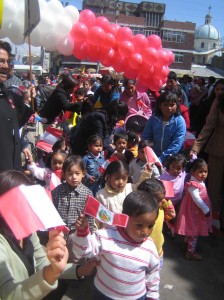
Huancayo is up in the Central Andes, over 3000m above sea level. I was expecting some altitude sickness, but had little difficulty adjusting – I feel winded every time I climb up the four flights of stairs to our penthouse, but that may be more a measure of my poor fitness. The air is polluted and the atmosphere is dry here – they don’t expect any rain until September at the earliest. It’s usually sunny and hot during the day and cold at night, but not much worse than fall in Vancouver. I can go out in shorts and a jacket, but people find that weird because they consider this their “winter.” There is real poverty everywhere I turn. Huancayo opened its first supermarket (e.g. a Walmart-like everything store) just last week; otherwise, the streets are mostly filled with little family-owned shops or street vendors on the sidewalks. I’ve been practicing my skill of dodging cars, people, and dogs as the sidewalks are small or non-existent and there is no such thing as a pedestrian crossing.
It’s day 3 in Huancayo and we already have practically a weeklong vacation. It’s Fiestas Patrias on Monday and the city basically shuts down for at least a week to celebrate Peru’s largest national holiday, its independence day. Viva el Peru!
Copyright © 2024 Samantha Bangayan | Sitemap | Disclosure Policy | Comment & Privacy Policy
All articles and photos in this blog are licensed under the Creative Commons Attribution License CC BY-NC-ND 3.0.
